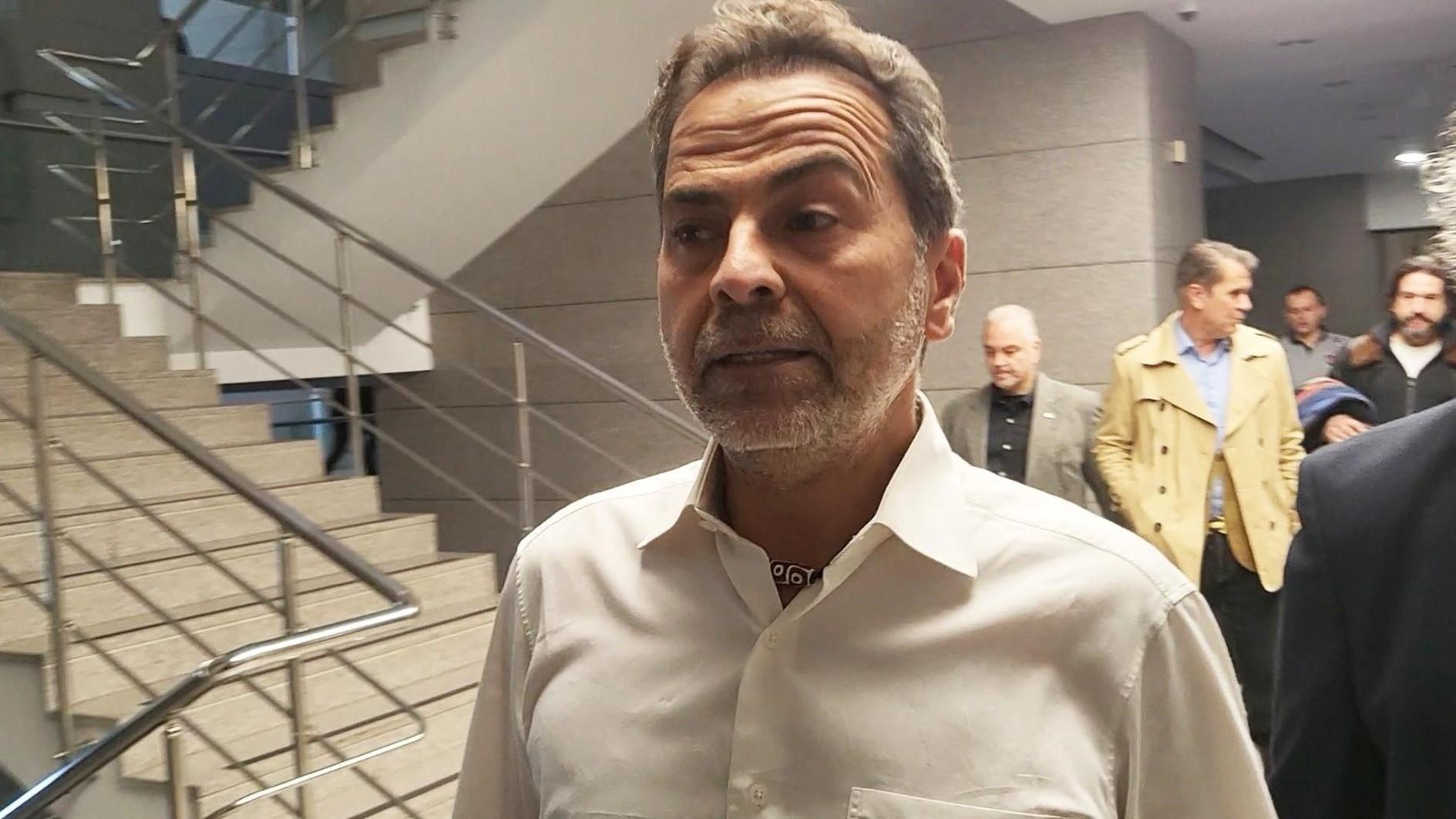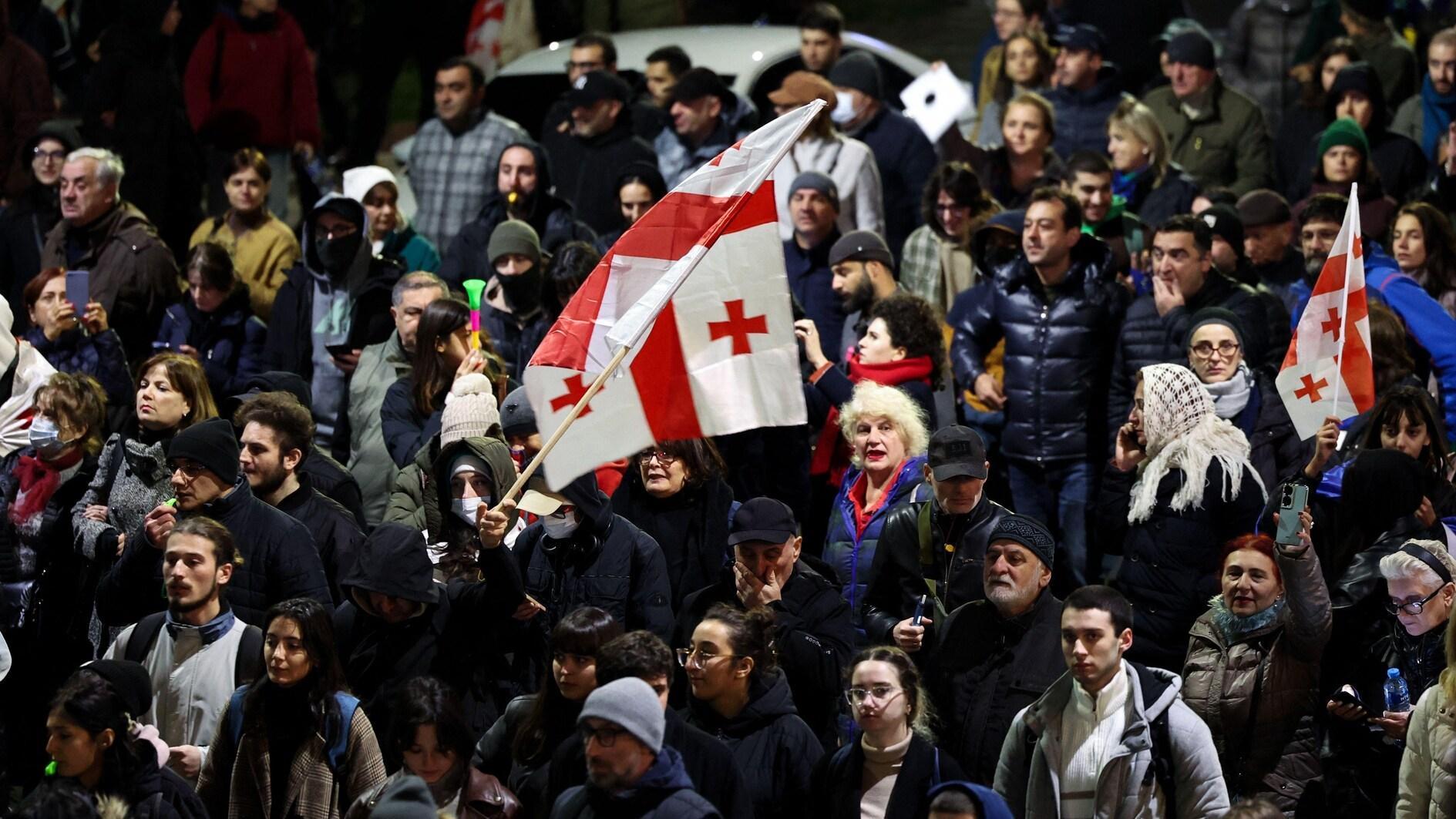Gobustan rock art: Bridges ancient, modern times
BAKU/ANKARA - Anadolu Agency

Ancient petroglyphs in Gobustan National Park in Azerbaijan.
Gobustan Rock Art Cultural Landscape in Azerbaijan is a bridge connecting the past and modern ages, a reserve official said in an interview.
“Same as Azerbaijan stands as an economic, cultural and historical bridge between Europe and Asia, Gobustan also stands as a bridge between ancient and modern times,” said Fikrat Abdullayev, deputy director of the reserve.
Gobustan, a hill and mountain site occupying the southeast end of the Greater Caucasus mountain ridge, is about 65 kilometers (40 miles) southwest of the capital, Baku, on the western shores of the Caspian Sea.
Abdullayev said Gobustan -- hosting rock art engravings depicting images of hunting, fauna, flora and lifestyles in pre-historic times -- was declared a national historical landmark of Azerbaijan in 1966 aiming to preserve the ancient carvings, relics, mud volcanoes and gas-stones in the region, and pass them to the future generations.
He noted that in 2007 Gobustan was declared a UNESCO World Heritage Site at the World Heritage Committee's 31st session held in Christchurch, New Zealand.
The UNESCO World Heritage Center said Gobustan is “an outstanding collection of more than 6,000 rock engravings bearing testimony to 40,000 years of rock art.
“The site also features the remains of inhabited caves, settlements and burials, all reflecting an intensive human use by the inhabitants of the area during the wet period that followed the last Ice Age, from the Upper Paleolithic to the Middle Ages,” according to UNESCO.
UNESCO also refers to Gobustan as having “outstanding universal value for the quality and density of its rock art engravings.”
In 2019, rock images of the preserve were included in the Islamic World Heritage List in the extraordinary meeting of the Islamic World Heritage Committee held in Rabat, Morocco, Abdullayev said.
The preserve official said the open-air museum, which covers an area of over 4,500 hectares, is one of the places where the first painting, music and dance culture was formed.
“Nowadays, we can find the motives of Gobustan rock art in various areas of art, such as sculpture and carpet weaving,” he said.
He highlighted that being a full member of International PRAT-CARP Association -- the European rock art organization -- facilitates the work of the Gobustan preserve to cooperate with relevant museums all around the world.
Record number of tourists
The number of tourists visiting the reserve increases every year, Abdullayev said.
“The reserve has updated its previous year visitors' record with over 130,000 visitors in 2019.”
During summer, which is considered to be an “attractive season,” the reserve welcomes more than 1,000 tourists throughout the day, he said.
Abdullayev said visitors come from various countries around the world, including the U.S., U.K., Russia, India and other places.
A number of famous Azerbaijani movies have been set in area, he added.
Research on area continues
Noting the first archaeological excavations in the area began in the 1930s, Abdullayev said Azerbaijani archaeologist Isak Jafarzade in 1939-1940 discovered 3,500 rock paintings, drawings and signs, as well as man-made pits, holes in rocks in Gobustan.
Since 1965, a “special scientific expedition” has been engaged in investigating the rock engravings of Gobustan, where archaeological research of more than 20 dwellings and shelters, and more than 40 burial mounds was carried out, Abdullayev said.
In 2016, work started on the reserve area for creating a digital database catalogue for rock arts in the Cingirdag-Yazilitapa area of Gobustan, he said, adding that as a result, all illustrated stones in this area, as well as in the newly discovered Sona rock have been documented.
“Some 541 new images were discovered in Cingirdag-Yazilitapa area, previously known with 877 recorded images, and 440 new images were discovered on the previously documented stones, while the remaining 101 images were found on 18 new stones found during the study in the area.”
Abdullayev said the latest number of recorded rock arts in the site has exceeded 7,000.
He went on to say that in 2019, the research team of Gobustan reserve, together with experts of the Institute of Archeology and Ethnography of the Azerbaijan National Academy of Sciences, carried out archaeological excavations in the lower slopes of the Boyukdash Mountain area, revealing the medieval village and a religious site belonging allegedly to the Bronze Age.
Gavaldash, tambourine stone of ancient years
Gavaldash is an ancient original tambourine stone in the national park, sounds of which resemble a musical instrument.
Rahima Mehdiyeva, an excursion guide at Gobustan open-air museum, demonstrated that tapping on gavaldash with small stones, one can get various clear sounds, reminiscent of a drum.
She explained that gavaldash consists of shell limestone and is a flat piece of limestone, while it produces different sounds in various places, depending on the density of the shells in the composition of the limestone.
Mehdiyeva said the reason for the distinction of sounds is the emptiness and porosity of the shells.
She also stressed that the petroglyphs -- images created by removing part of a rock surfaces by incising, pecking, carving, and abrading -- resembling oxen and women are often among the rock engravings in Gobustan.
The bigger is the petroglyph, the older it means to be, she said, noting that the images used to be drawn on its original shape and size during ancient times, while images of "more modern" ages were drawn in a "schematic" scaled way.
Mehdiyeva said the chronological timeline of rock depictions of Gobustan covers the period from the end of the Upper Paleolithic to the Middle Ages.
She said during this long historical period, life “almost continuously” lasted in Gobustan -- with the small pauses caused by natural disasters -- in the camps such as Ana-Zagha, Kaniza, Gazelles, Firuz and others.
The theme of Gobustan rock images is quite colorful, she said, adding that the rock arts include bulls, goats, deer, lions and other zoomorphic drawings, as well as images of women, hunters, boats, tamgas and various composition scenes.
















